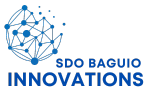Story Path Steps: Listening and Sequencing Made Simple
Jane L. Adolfo
School Head
Proponent
The Problem
The competency performance of Grade II learners in listening to narrative and informational texts and sequence events has the lowest improvement as determined in the conduct of pre-test and post-test asssessment through the use of Performance Assessment of Standards and Skills (PASS).
The Context
The Grade II participants have parents with low educational attainment, some of whom are single parents with minimal earnings as caddies.
In spite of this, their overall performance in English learning competencies is 76% with a descriptive rating of Proficient.
Stakeholders Pain Points
LEARNERS
1.Difficulty in following verbal instructions and recalling story sequence.
2.Limited engagement with traditional learning methods, leading to disinterest and lack of motivation.
3.Struggles with comprehension and retention of narrative texts, impacting academic performance.
TEACHERS
1.Challenges in finding effective methods to teach listening comprehension and sequencing.
2.Difficulty in assessing and providing individualized feedback to learners.
3.Limited resources for engaging instructional materials.
PARENTS
1.Limited understanding of how to support their child’s learning at home.
2.Concern about kid’s low performance in essential literacy skills.
3.Desire for more engaging and educational activities for their children.
BARANGAY OFFICIALS
1.Need for effective programs and tools to address educational challenges in the community.
2.Concern about the overall educational development of the community’s children.
3.Desire to support the school in improving literacy rates and academic performance.
The Solution
Use the Story Path Steps to improve more the reading competency of learners in listening to narrative and informational texts and sequence events which has the lowest improvement as determined in the conduct of pre-test and post-test asssessment through the use of Performance Assessment Standards and Skills (PASS).

Challenges
Learners: Follow verbal instructions and recall story sequence.
Teachers: Find effective methods to teach listening and sequencing.
Parents: Understand the value of support to the child’s home learning.
Barangay officials: Formulate effective programs and tools to address educational challenges in the community.
Needed Resources
Picture books
Story sequence cards
Hands-on materials like puppets and props
Printable story maps or graphic organizers
Source:
Download from internet then customize according to learners’ needs.
Monitoring & Evaluation
Regular meeting with teachers, parents and barangay officials concerned
Classroom observation of teachers and learners
Academic performance of the learners
Progress report from the adviser

Jane L. Adolfo
School Head
Proponent

